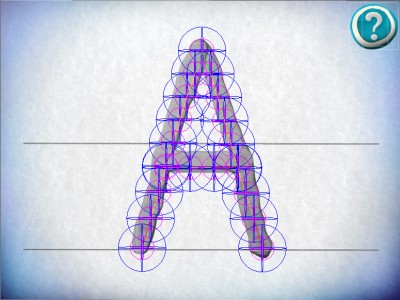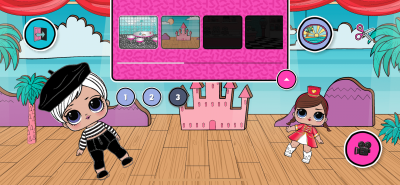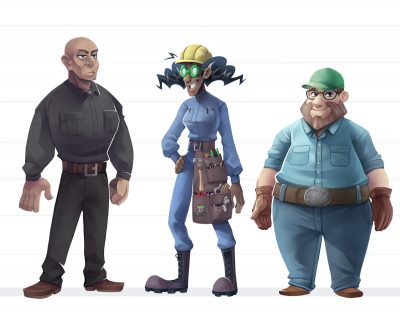The Engine Under the Hood
Early on we developed a proof of concept to evaluate the animation potential of Play-Doh sculpts using Flash and the Starling framework. The demo came together just a few short weeks and we had the basics of a drag and drop stickerbook to share with the client. However, when it came time to decide on an engine to deliver the entire product we knew we would need more flexibility and support from the chosen engine. We selected Unity3D which required some 2D plugins to deliver the complete product. While there were some drawbacks to this choice, overall it provided the proper foundation on which to build the application, as well as preping us for a cross-platform release on both iOS and Android.
In order to explain how we constructed the different screens in the game, it is best to conceptualize a play being performed in a theatre. Unity 3D is the edifice of the theatre. The NGUI plugin allowed us to build a set for the stage, and properly sort all the 2d elements like actors on a stage. Then we brought the play to life using the PlayMaker visual scripting plugin, as well as custom game scripts and systems.
The Handwriting System
The handwriting system was a robust creation by our lead programmer. He created a tool that allowed us to trace letters in Unity’s play mode (which normally doesn’t save any changes) and re-construct the trace data in order to save our letters. Each letter had a certain number of strokes, and nodes placed along the path of that stroke that restricts how far the player can stray from the nodes while tracing the letter. These nodes also have to be traced sequentially in order for the letter to be properly formed. This allowed us as much or as little accuracy in tracing as we wanted to require.
We understand that younger players lack the motor skills to trace letters perfectly, so we ended up erring on the side of being more generous with the accuracy required from the system, so that tracing letters was more forgiving for our young audience. After all, our goals with the title are to expose very young players to their letters to help them learn their ABCs, versus enforcing far more rigid rules of penmanship that come into play around ages 6-9.
Meet the Doh-Dohs!
As the game developed we continued to add on features in order to solidify the connection between the handwriting, the crafting of objects and the playful scenes that can be made with those objects. Roughly mid way through the development we were approved to include the newly launch mascots for Play-Doh – the Doh Dohs – into the app as cheerleaders within the experience.
Previous Post: Play-Doh Create ABCs – A Partnership with PlayDate Digital









Leave A Comment